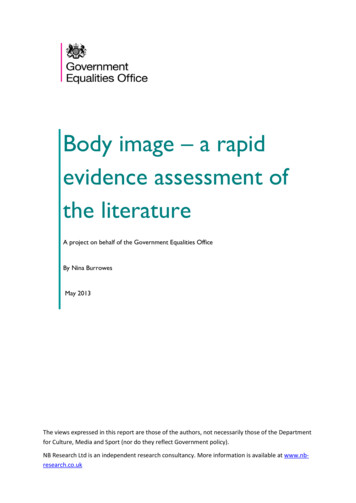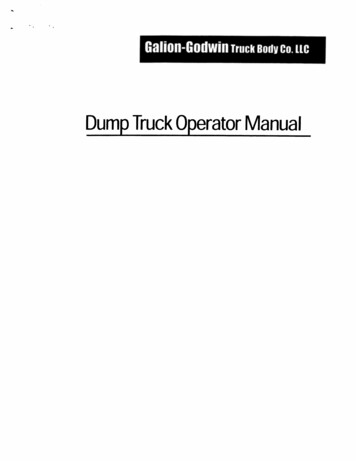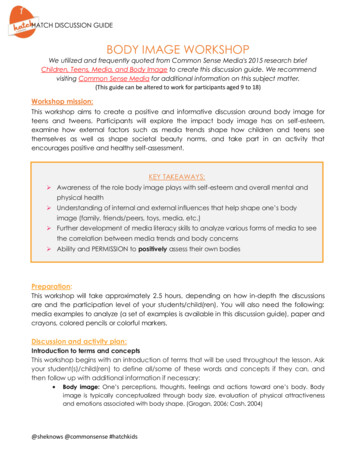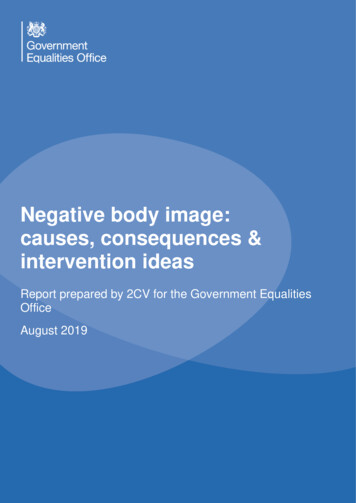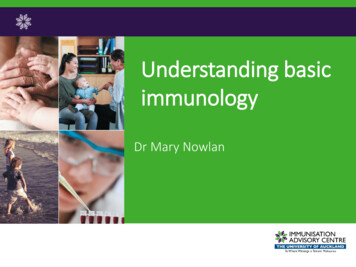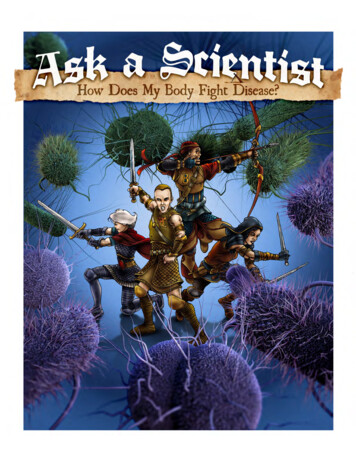
Transcription
In general, your body fights disease by keepingthings out of your body that are foreign.Your primary defense against pathogenic germs are physical barriers like your skin.You also produce pathogen-destroying chemicals, like lysozyme, found on parts ofyour body without skin, including your tears and mucus membranes.
A group of innate immune system cells will be there tocapture and destroy the invading germ.These cells are always on alert for germs, patrollingyour body like soldiers looking for invaders.These innate cells then communicate to therest of your body regarding the problem byactivating the inflammatory response.The swelling, pain and highertemperature caused byinflammation attracts morecells to the site of infection.The innate cells also scout outinformation for another, morespecific group of cells called theadaptive immune system cells.The innate immune cells trainthe adaptive immune cells tofight disease in two ways.
First, they instruct the adaptiveimmune cells how to respondto the invader by releasingchemicals called cytokines.Cytokines are signals recognized by cells, telling them what to doand where to go. Your body responds to threats in different waysdepending on the cytokine signal released by your immune cells.Second, the innate antigenpresenting cells capture andbreak down the invaders intopieces that can be recognizedby the adaptive immune system,called antigens.Every invader’s antigenic pattern is unique.Together, cytokines and antigens train individualadaptive immune cells to recognize and destroyspecific patterns of each foreign invader.
The next time that this pathogen tries to infect you.Your adaptive immune cells will remember it!Your body will be better trainedand ready to stop the threatbefore it makes you sick.
Working together, the innate and theadaptive cells of your immune system havethe ability to protect you from nearlyanything trying to invade your body.
But this is war. It’s not that easy! Some pathogens, includingthose that cause flu, strep throat, and malaria, can mutateand change the way they look to your immune system over time.They disguise themselves by changing their surfaceantigens in a process called antigenic variation.This disguise makes it harder for yourimmune system to recognize them.
Because it’s harder to recognize the mutatedgerms, your body’s immune system has a hardertime protecting you from them, even thoughyou’ve been exposed to them before.This is why you can getsick from flu and strepthroat multiple times.For these type of germs, just because you’vebeen sick once, doesn’t mean you won’t get sickagain. Every year has the potential to producenew disguised germs that can make you sick.
But there’s some good news! You can helpyour body prepare and defend itself againstpathogens and disease by getting your regularvaccinations, including the one for flu.Vaccines are made up of small, harmless pieces of thepathogen you are trying to protect yourself against.Antigen Presenting Cells give the antigen fromthe vaccine to the adaptive immune cells.WE’VE CAUGHTONE, SIR!
They do this in special organs called lymphoid tissue in orderto choose the right soldiers for the job.Vaccines help your innate immune cells train a new platoonof adaptive immune cells without ever being infected at all.If you want to study how pathogens interact with your body, howto make vaccines better, and how to make new drugs to fightdisease, you could work at the CDC as an immunologist!We’ll be readynext time.
WORDDEFINITIONadaptive immune systemThe immune response that targets specific foreign invaders. It is also responsible for immunologicalmemory, leading to enhanced immune response to subsequent encounters with that foreignantigen.antibodyA protein secreted by B-cells that identify and neutralize foreign antigens. These proteins can besecreted and circulate in your blood for many years after being exposed to a pathogen or vaccineto protect you from re-infection from that same invader.antigenAny of various substances that, when introduced into a living body, causes the production ofantibodies.antigen presenting cells (APC)Innate immune cells that capture, process and present foreign antigens to activate an adaptiveimmune response to specifically target that threat.antigenic variationThe method a germ uses to alter its surface proteins in order to evade a host immune response.This allows pathogens to cause re-infection, as their antigens are no longer recognized by thehost’s immune system.B-cell (B)An adaptive immune cell that monitors for the presence of foreign antigens outside of a person’scells. When activated, they will secrete antibodies to specifically recognize surface antigens on aninvading germ or foreign molecule, marking them for destruction by the innate immune system.cytokinesAny of various molecules secreted by immune cells that carry signals to and have an effect onneighboring cells.immune systemThe bodily system of organs, tissues, cells, and cell products, which protects the body by detectingthe presence of, and disabling, disease-causing agents in the body.immunologistA scientist who studies how an organism defends itself against pathogens and other foreigninvaders to the body.inflammatory responseThe way in which an organism protects itself from harmful stimulation, such as germs, injury orirritants. The function of inflammation is to eliminate the initial cause of cell injury, clear outdead cells and tissues damaged from the original injury, and activate the immune system toinitiate tissue repair.innate immune systemThe immune response that provides immediate, but non-specific defense against foreign invaders.It is primarily responsible for initiating the overall immune response and activating the adaptiveimmune response.lymphoid tissueThe location for production and maturation of the adaptive immune cells. The lymphatic systemis part of the circulatory system, constantly screening an organisms blood for foreign invaders.Major lymphoid organs include the lymph nodes, spleen and thymus.lysozymeA molecule made by a person’s body that destroys pathogens, found in tears and mucus.mucous membraneA lubricating barrier that lines various surfaces or organs, as of the respiratory, digestive, andgenitourinary tracts.mucusA slimy, slightly sticky material that coats and protects certain parts of the body, such as theinside of the nose and throat.pathogenAny organism that causes disease, such as a bacterium, virus, parasite, or fungus.polymorphonuclear leukocytes (PMN)Also known as granulocytes, are found in the bloodstream and are usually the first to arrive toan infection or injured site. They amplify the ongoing inflammatory response by releasing morecytokines, eat and destroy invading germs in the affected area.T-cell (T)An adaptive immune cell that monitors for the presence of foreign antigens presented to themfrom inside the organism’s cells. When activated, they can direct the ongoing immune responsethrough secreting a variety of cytokines or can directly kill the infected cells.vaccinePieces of germs causing disease that are dead or not active. Vaccines are used to help theimmune system protect against the disease.
Written by Dr. Victoria Jeisy-ScottPenciled and Inked by Bob HobbsDigital Color and Lettering by Kristen Immoor (Contractor)This project was a collaboration between the Office of the Associate Director for Communication, the Office of theAssociate Director for Laboratory Science and Safety, and the National Center for Chronic Disease Prevention and Health Promotion,Division of Population Health, School Health BranchCS238388
U.S. Department of Health and Human Services, USDHHS, Centers for Disease Control and Prevention, CDC, National Center for Chronic Disease Prevention and Health Promotion, NCCDPHP, Division of Population Health, School Health Branch, DPHSHB, Ask a Scientist, How Does My Body Fight Disease?, graphic


